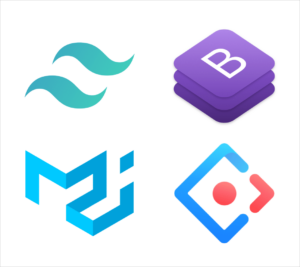Cascading Style Sheets (CSS) have become the backbone of modern web design, offering a robust set of tools to control the visual presentation of websites. From styling layouts to creating interactive elements, CSS serves a multitude of purposes. Therefore, shaping the user experience across the digital landscape. This article explores the top uses of CSS that have transformed the way websites are designed and presented.
Styling Web Page Layouts with Flexbox
One of the primary uses of CSS is styling web page layouts, and Flexbox is a game-changer in this domain. Flexbox is a layout model that allows developers to design flexible and dynamic layouts, adapting to different screen sizes and orientations. By providing an efficient way to distribute space and align elements, Flexbox simplifies the process of creating responsive and visually appealing layouts without the need for complex HTML structures.

Creating Grid-Based Layouts with CSS Grid
CSS Grid is another powerful tool for designing layouts, offering a two-dimensional grid system. With CSS Grid, developers can create complex and precise layouts with rows and columns. Hence, providing greater control over the placement and alignment of elements. This feature is particularly useful for applications with intricate interfaces or websites requiring magazine-style layouts, enhancing the overall design flexibility.
Responsive Web Design with Media Queries
The rise of diverse device types necessitates responsive web design, and CSS Media Queries are essential for achieving this goal. Media Queries enable developers to apply different styles based on the characteristics of the user’s device, such as screen width, height, or device orientation. This ensures that websites adapt seamlessly to various devices, delivering an optimal user experience across desktops, tablets, and mobile phones.
Enhancing User Interaction with CSS Animations
CSS animations bring websites to life by introducing dynamic and engaging visual elements. Developers can use keyframes and animation properties to create smooth and captivating animations, ranging from subtle hover effects to complex loading sequences. CSS animations contribute significantly to user interaction, making websites more appealing and fostering a positive user experience.
Styling Forms for Better User Experience
Forms are integral components of many websites, and CSS plays a crucial role in enhancing their visual appeal and usability. With CSS, developers can style form elements, apply custom layouts, and create responsive designs. This not only contributes to a more polished appearance but also improves the overall user experience by making forms more intuitive and user-friendly.
Customising Fonts and Typography
CSS provides extensive capabilities for customising fonts and typography, allowing developers to create unique and visually striking text elements. From adjusting font sizes and line heights to incorporating custom fonts from external sources, CSS empowers designers to craft a distinctive typographic style that aligns with the overall aesthetic of the website.
Designing Navigation Menus and UI Components
CSS is instrumental in designing navigation menus and various user interface (UI) components. From sleek navigation bars to interactive buttons, developers leverage CSS to style and position elements, creating a cohesive and visually appealing interface. Techniques like CSS transitions and transformations further enhance the interactivity of these components, contributing to a seamless user navigation experience.
Implementing Dark Mode
Dark mode has emerged as a popular design trend, offering users an alternative color scheme that is easy on the eyes, especially in low-light environments. CSS facilitates the implementation of dark mode by enabling developers to toggle between different color schemes seamlessly. This not only caters to user preferences but also adds a modern and sophisticated touch to website design.
Building Responsive Image Galleries
CSS enables the creation of responsive image galleries that adapt to different screen sizes without sacrificing visual quality. Techniques such as CSS Grid and Flexbox play a crucial role in designing flexible image grids that dynamically adjust based on available space. This ensures that image galleries remain visually appealing and functional across a variety of devices.
Creating Print Stylesheets for Print-Friendly Pages
Beyond the screen, CSS is utilised to create print stylesheets, ensuring that web pages are well-formatted and legible when printed. Print stylesheets allow developers to customize the appearance of printed pages. Therefore, optimising content layout and removing unnecessary elements that are better suited for digital viewing. This ensures a seamless transition from digital to print for users who prefer physical copies of web content.
Conclusion
In conclusion, CSS’s versatility is evident in its myriad uses, transforming the way websites are designed and presented. From layout models like Flexbox and CSS Grid to animations, typography, and dark mode implementation, CSS remains a cornerstone of modern web design. Its continuous evolution and adoption of new features ensure that CSS will continue to play a pivotal role in shaping the visual landscape of the digital world.

